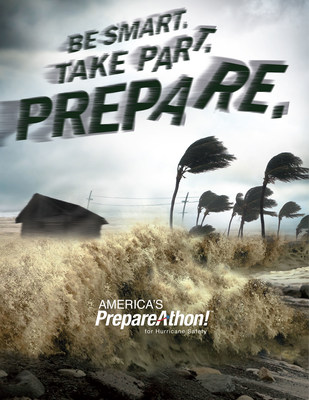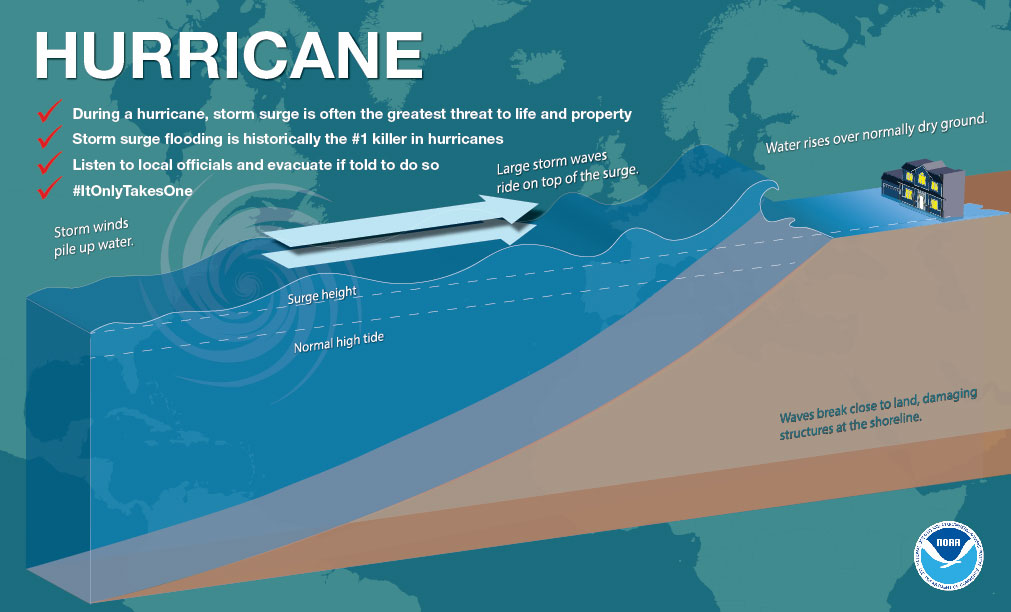News Releases
https://icf.mediaroom.com/index.php?s=20300
WASHINGTON, Sept. 14, 2015 /PRNewswire/ -- As part of National Preparedness Month, the Federal Emergency Management Agency (FEMA) will be providing information each week in September to help spread the word about how people and communities can better prepare for specific disasters before they strike. Each week will focus on a different type of disaster. The third week highlights hurricanes and the steps people and communities should take to prepare for a hurricane so they can recover more quickly once it has passed.
Experience the interactive Multimedia News Release here: http://www.multivu.com/players/English/7607931-fema-national-prepareathon/

Please contact the FEMA News Desk at (202) 646-3272 for additional information.
According to the report of the National Climate Assessment, Climate Change Impacts in the United States , the intensity, frequency, and duration of North Atlantic hurricanes, as well as the frequency of the strongest hurricanes, have all increased since the early 1980s. The number of Category 4 and 5 hurricanes in the North Atlantic and the amount of rain falling in very heavy precipitation events has increased over recent decades. While the relative contributions of human and natural causes to these increases are still uncertain, hurricane-associated storm intensity and rainfall rates are projected to increase as the climate continues to warm. The Southeast and Caribbean regions are exceptionally vulnerable to sea level rise, extreme heat events, hurricanes, and decreased water availability.[1]
People who live in hurricane-prone coastal areas should know their vulnerability to wind and flooding, as well as what to do to reduce the effects of both. People who live inland from coastal areas may also experience high winds, power outages, and flooding from torrential rain. Protecting yourself today means having sources for information, preparing your home or workplace, developing an emergency communications plan, and knowing what to do when a hurricane is approaching your community.
Know how to stay informed. Receiving timely information about weather conditions or other emergency events can make all the difference in knowing when to take action to be safe.
- Monitor weather reports provided by your local media.
- Many communities have text or email alerting systems for emergency notifications. To find out what alerts are available in your area, do an Internet search with your town, city, or county name and the term "alerts."
- Consider buying a NOAA Weather Radio All Hazards receiver, which receives broadcast alerts directly from the National Weather Service. You can purchase these at many retail outlets, such as electronics and big box stores, or online.
- Think about how you will stay informed if there is a power outage. Have extra batteries for a battery-operated radio and your cell phone. Consider having a hand crank radio or cell phone charger.
Know your evacuation routes; plan your transportation and identify a place to stay. Know your community's local hurricane evacuation plan and identify several escape routes from your location in case roads are blocked. Include plans to evacuate people with disabilities and others with access and functional needs, as well as pets, service animals, and livestock. If you plan to evacuate by car, keep your car fueled and in good condition. Keep emergency supplies and a change of clothes in your car.
Practice how you will communicate with family members. In a dangerous situation, your first thoughts will be the safety of your family and friends. In case you are not together when authorities issue a tropical storm or hurricane watch, or a tropical storm or hurricane warning, practice how you will communicate with each other. Remember that sending texts is often faster than making a phone call. Visit www.ready.gov/prepare for resources on developing a family emergency communication plan.
Store supplies you will need to live at home with no power. Even if you are in an area that was not asked to evacuate, you may still lose power and the water supply to your home. Depending on the strength of the hurricane and its impact on your community, you could be in your home with no power or other basic services for several weeks. Think about items you require for this situation. Keep these supplies on hand in your home. For a full list of supplies for your emergency supply kit, visit www.ready.gov/build-a-kit.
More information on how to prepare for a hurricane is available in this guide.
[1] Melillo, Jerry M., Terese (T.C.) Richmond, and Gary W. Yohe, Eds., 2014: Highlights of climate change impacts in the United States: The Third National Climate Assessment. U.S. Global Change Research Program, 148 pp.

To view the original version on PR Newswire, visit:http://www.prnewswire.com/news-releases/what-people-need-to-know-about-hurricanes-300141898.html
SOURCE Federal Emergency Management Agency (FEMA)
